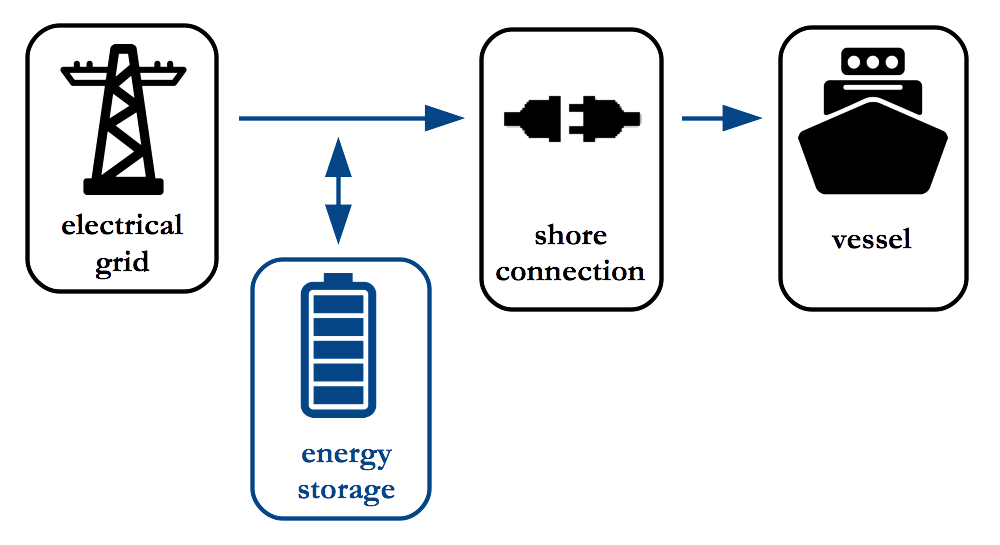… does your customer have to wait for shore power?
The Challenge for Onshore Power Supply:
- Limitations of local electrical grids block projects for cold ironing and electric/hybrid ferry shore connections
- Extensions of the electrical grid are costly and time-consuming
- Loss of grid supply is a considerable commercial and technical risk
By equipping your shore power connection product or project with an energy storage acting as a buffer, you can decrease or avoid the fixed and variable costs and work for an extension of the local electrical grid that are usually required for large intermittant loads such as Onshore Power Supply (OPS).

Concept diagram: Onshore Power Supply with energy storage acting as buffer
Your Advantage
| More added value: | By adding energy storage for OPS to your product or project portfolio, you can increase the share of your company in the value chain |
| New markets: | Enable shore power projects where the grid access is too weak |
| Lower Capex: | Extension costs of the local grid can be eliminated or reduced |
| Lower Opex: | Monthly/yearly grid access fees that depend on active power usage are reduced, fees for reactive power can be eliminated |
| Quick: | Shorten project planning and execution times – no time-consuming grid extension permits, excavation works etc. |
| Flexibility: | Energy storage systems are multi-service transportable solutions – no stranded investments |
| Availability: | The uninterruptible power supply functionality (UPS) of a storage solution increases the availablity of your system and your service |
| Eco-efficiency: | Using electrical shore power instead of fossil fuels. It’s good for the environment. It’s good for your business! |
Sample Case
Large RoRo ferry or medium battery powered ferry in Norway, requires 625 kW shore power for 12 minutes every hour. Instead of drawing the full required shore power from the local grid, the port is equipped with an energy storage system acting as a buffer. Distance to next transmission grid connection 10 km.

Power profile of the sample scenario with and without storage
Benefits
- Required grid connection can be narrowed down from 625 kW to 125 kW – a supply that can often be met even by weak grids without any new cables, transformers or overhead lines required
- Charging of the ferry is also possible in the case of an interrupted supply – lower risk of downtimes for your customer
- Savings: ca. 275 000 NOK/year (about 30 500 EUR/year)
Interested? Receive our sample calculation or continue to our offer for your business
Would you like to receive the calculation sheet for the sample scenario? Contact us via our contact options.